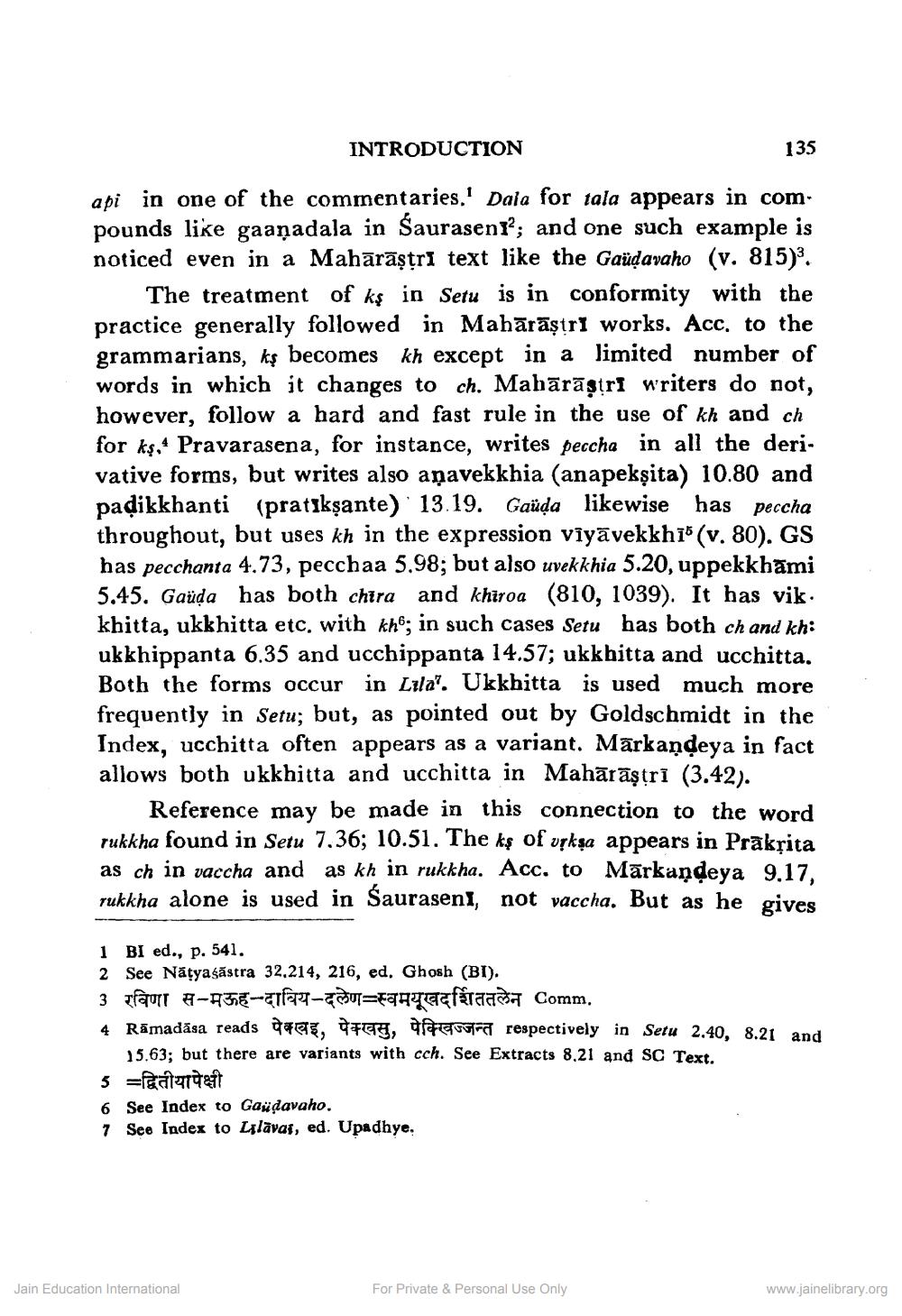________________
INTRODUCTION
135
api in one of the commentaries.' Dala for tala appears in compounds like gaaņadala in Sauraseni?; and one such example is noticed even in a Mahārāştri text like the Gaüdavaho (v. 815).
The treatment of kş in Setu is in conformity with the practice generally followed in Mahārāștry works. Acc. to the grammarians, kş becomes kh except in a limited number of words in which it changes to ch. MahārāstrI writers do not, however, follow a hard and fast rule in the use of kh and ch for kş,4 Pravarasena, for instance, writes peccha in all the derivative forms, but writes also añavekkhia (anapekṣita) 10.80 and padikkhanti (pratikșante) 13.19. Gauda likewise has peccha throughout, but uses kh in the expression vīyāvekkh7 (v. 80). GS has pecchanta 4.73, pecchaa 5.98; but also uvekkhia 5.20, uppekkhāmi 5.45. Gaüda has both chira and khiroa (810, 1039). It has vik. khitta, ukkhitta etc. with kh6; in such cases Setu has both ch and kh: ukkhippanta 6.35 and ucchippanta 14.57; ukkbitta and ucchitta. Both the forms occur in Lila?. Ukkhitta is used much more frequently in Setu; but, as pointed out by Goldschmidt in the Index, ucсhitta often appears as a variant. Mārkandeya in fact allows both ukkhitta and ucchitta in Mahārāştrī (3.42).
Reference may be made in this connection to the word rukkha found in Setu 7,36; 10.51. The kş of vặkļa appears in Prakrita as ch in vaccha and as kh in rukkha. Acc. to Mārkandeya 9,17, rukkha alone is used in Saurasenl, not vaccha. But as he gives
1 BI ed., p. 541. 2 See Nătyaśāstra 32.214, 216, ed. Ghosh (BI). 3 faut #-A36-af-CUT=FTATEclaassa Comm. 4. Rāmadása reads 990s, aeg, sera respectively in Setu 2.40, 8.21 and
15.63; but there are variants with cch. See Extracts 8.21 and SC Text. 3 =gatettest 6 See Index to Gaüdavaho. 7 See Index to Lilāvas, ed. Upadhye.
Jain Education International
For Private & Personal Use Only
www.jainelibrary.org




